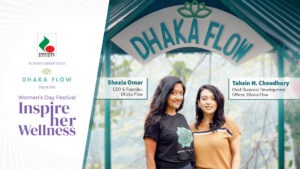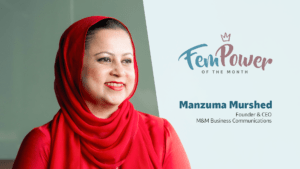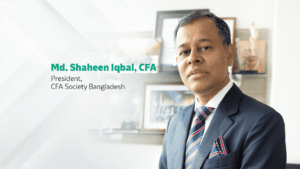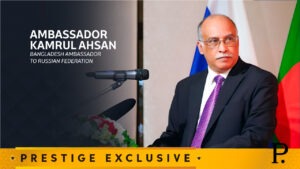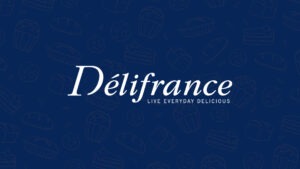Nabil Rahman is an artist and poet. Born in Sylhet, Bangladesh, he grew up in New York City and moved back to Bangladesh where he currently lives. He received an MA at the City University of New York Graduate School of Journalism in 2012 and a B.A. in Creative Writing at Herbert H. Lehman College (City University of New York) 2010. His exhibitions include Dhaka Art Summit (2020, 2018); XT><LX, Bellas Artes Projects, Manila (2018); You Can’t Cross the Ocean Merely by Staring at the Waves, Krinzinger Gallery (2016); Raster, Experimenter Gallery (2016); it hung over us like an anvil, Longitude Latitude 6 (2015). He attended Uronto Art Residency Program in 2019 and Bellas Artes Projects in Bataan, the Philippines in 2018 and 2017. Rahman worked as a freelance journalist for Al Jazeera America, ProPublica, TIME, Open City magazine, Rogue magazine, Vogue India, and has worked as an editor for CBS News, multimedia producer for National Geographic and others. He was the producer for the radio show ‘Where I’m From’. He taught English at Herbert H. Lehman High School in the Bronx, NY. He curated the photography exhibition, ‘Eyes on Bangladesh’, New York in 2014. In Dhaka, he worked for Chobi Mela International Festival of Photography and Bengal Arts Programme.
1. Tell us about yourself
My name is Nabil Rahman, I was born and grew up in Sylhet. My grandfather from my mom’s side was a poet. His name was Kabi Dilwar. My dad’s family was more conservative. So I grew up in a mix of life. When I was living at my grandfather’s, it was freer. My grandfather used to talk to me about these famous artists and introduce me to them but at that time I didn’t quite understand the gravity of these people I was meeting because I was not from that world. So, I had an early experience of seeing the freedom of an artist and less judgment. When I was a kid, my mom took me to singing classes. She used to sneak me out for the classes because of our family and suppressed culture. So, that’s the environment I grew up in.
2. What was it like moving to the United States?
At the age of 11, we moved to New York. That was another big shift for me. Everything and everyone I knew was gone. It was a very free environment but I think that was pretty traumatic for me because I didn’t know the language or anybody. I had to learn English from the square one but I managed to pick it up quickly. Then I went to high school but really didn’t fit anywhere. After graduating from high school, I went to Stony Brook University to become a doctor. Everybody at that time was going for becoming a Doctor so I thought I should try that too. Before going to college, I was always controlled like, I had to be home at a certain time or couldn’t go out at weekends. When my parents moved to the US, they became even more conservative to hold onto their cultural identity. My zip code was 11377 which felt like the most diverse zip code in the world, over 200 languages were spoken in that zip code alone. There were kids from all over the world.
Eventually I realized I wanted to see the world while I had time. That’s when I went into journalism. Journalism became this thing and I got to talk to interesting people and go to interesting places. People like Hunter S. Thompson were big influences on me in term of creative journalism. But when I found myself having to follow instructions and specific guidelines, it didn’t suit me at all because suddenly I had to follow structure which wasn’t the case for poetry. Then I found myself moving away from writing and into photography, making videos, short documentaries, and another world of visuals: visual communication. Like, what can I say about a photograph? There’s so much power in photography, I can portray some as grand or sinister with the change of angle. Having that creative control of visual and learning them, and also learning how to sculpt in time. In 10 seconds I can give you an experience which takes 10 hours. I found that quite powerful too. My professor was James Estrin who was the Photo Editor of The New York Times. Bob Sacha, who worked with National Geographic for many years, he was teaching me visual storytelling. He would look at my work and tell me to share them on social media. During that time I started doing freelance stuff.

3. How did your exploration of art unfold?
After graduation, I decided that I am going to write stories when my classmates were applying for jobs. I decided to move to France and just found stories. There, I just started doing my work and sharing them on social media. When I did that, instead of me calling people to apply for jobs, people started calling me. They saw my work and that led me to other publications like, Times Magazine, World Magazine and a few others.
I had a magazine called Pineapple and Milk and with that magazine we interviewed all the artists that we admire. When you have a magazine, you get access. I was the Editor in Chief of the magazine. I was living with this artist, his name was Rajiv Anand. He was half polish, half Indian. When I was living with Rajiv, we used to paint late at night. He would wake me up from sleep and used to tell me to paint something. So, I used to paint and he would be like, “Oh my God! That is so horrible what you’re doing! This is so bad that I can’t even do this if I tried.” That made a click in my mind that this guy has a Masters in Fine Art and he is an art teacher in New York City who has a whole career. This guy is telling me that he can’t draw what I can, so that means no one can make what I make and whatever I make will be unique. So instead of getting offended I thought that I should never go to art summits. I felt everyone going to art school followed the same type of training. Charukola artists tend to follow similar aesthetics, they’re drawing the same thing. Then I started digging Rajiv’s brain, started to learn composition and what is balance. He used to show me his art histories and he became sort of my mentor. At the same time I got this gig with National Geographic, I was their Multimedia Producer. I remember this one time we had to take a picture of Google’s office but taking pictures from the street was illegal. We had to figure out how to get the picture, so we got a boom lift and some construction gear and faked working on the streets to get our shot.
After about a year of experience, I remember Nelson Mandela died, so I was watching the documentary on Nelson Mandela and I thought that I want to do something like that. I had an idea that I am going to put a team together and started Eyes on Bangladesh in 2014. I wanted to expand my community’s vision. We did a crowdfunding campaign and I dressed up nicely, put together my portfolio and was talking to investors. That show was a milestone for me. About 1500 people came within 3 to 4 days. The whole community became really active and suddenly we were having discussions like taboos, teenagers in our community and all of these different things. There were also a lot of Bangladeshi photographers. That grew a community from 2 people to 30-40 people.
4. You grew up in New York and now you’re living in Bangladesh, what are some of the major differences among artists and writers you see and experience across the two?
Human beings are human beings.We are all essentially going through a shared journey. New York has more museums and art intitutions. Dhaka is more full of possibilities because we are a growing scene. So this city is the place to be in for me. I would rather be part of a growing process instead of a predictable established system. The art community here has given me so much. I also love being a bridge introducing my New York friends to Dhaka friends and vice versa. Some of my friends came to visit me in Dhaka and had life changing experiences.

5. What does your art intend to represent?
My art is a way for me to process thoughts that cannot be expressed in words. Exhibitions are less about the art work and more for creating gatherings, sharing experiences. My work is a way for me to explore my subconscious, and figure out where I am at and what is happening in my journey.
6. Do you listen to music when you’re in the process of creation? If yes, what genres?
I listen to a lot of lectures. When I’m drawing, I’m usually listening to lectures of whatever I am curious about. Sometimes music.
7. Are there any places or environments that help inspire your poetry and art?
I think nature is really important. Being around nature, seeing birds, shadows falling. If you can step outside of your comfort zone, you can learn a lot about yourself.

8. Who are some of your inspirations? Which writers and artists would you recommend to people?
I think that when you look for essence, you can find inspiration. Human beings are so special. If you take all the money in the world and ask it what it wants, it would probably ask to be human for a while. Everyone has a story.
9. Is there an era of art you particularly are drawn to?
I think I am drawn to right now. That’s why I am where I am. There are a lot of interesting things happening here. There was only Charukola, then other institutes showed up and now there is a mix of energies. It’s a great time for arts right now. And I think artists are really connected to the economy. So, the greatest arts come out when the economy is booming. People start to support artists and collectors form when they have money. So, there is a link between rising economy and rising artists. There is no better place, better time than now.

10. Have the recent events across the world inspired any art?
For the last few years, I feel like I have a lot of energy but I didn’t know how to focus. So, I’ve been doing a lot of meditation and prayers that has helped me calm and to get rid of the anxiety. Different traditions have different rituals. Incorporating that in my life has become really positive and has taken me to a quieter place. By the time Covid hit us, I was already isolated. But Covid has been the most exciting time for me. I have been moving around so much more than I usually do.
11. What’s the best advice you’ve received? Any advice of your own for aspiring artists?
There are some things that you cannot share with other people. Things that are really inspiring are sort of beyond words. I can’t express it. You cannot transfer them to somebody else. Trying to recreate that for someone else almost cheapens the idea of it.
Just keep rolling. Just take one day at a time. It’s not about the destination, it’s about the journey.

